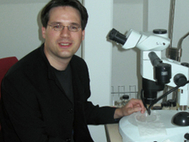
Phylogeny of Carboniferous millipedes
Arthropods constitute a highly diverse group of animals dominated by insects, arachnids, crustaceans and myriapods, the latter consisting of two important classes: Chilopoda and Diplopoda. Diplopods are remarkable for their diversity and disparity and have a long and rich fossil record going back to the Silurian. Here, X-ray microtomography (mCT) reveals the detailed morphology of two diplopods from the Carboniferous (Kasimovian; ca 305 Ma) Lagerst€atte of Montceaules-
Mines, namely Amynilyspes fatimae (Pentazonia) and Blanziulus parriati (Juliformia), allowing three-dimensional reconstructions to be made. Important features of amynilyspedids, exemplified by Amynilyspes, are observed for the first time, such as the telopods, 21 pairs of walking legs, 13 tergites and the anal shield. Details of the ocular field, antennae and mandibles provide key information on the sense organs of these ancient myriapods as well as their capacities to process food. The presence of possible spiracles in B. parriati indicates a probable adaptation to living in terrestrial environments. Intraspecific differences seen in the appendages of Amynilyspes fatimae suggest that late Carboniferous pill millipedes had sexually dimorphic features closely similar to those of extant millipedes. Amynilyspes fatimae and B. parriati are interpreted as two detritivore millipedes living in a vegetated and humid environment (e.g. forest, swamp, litter) that are likely to have played the role of recycling plant detritus as do numerous present-day myriapods.






